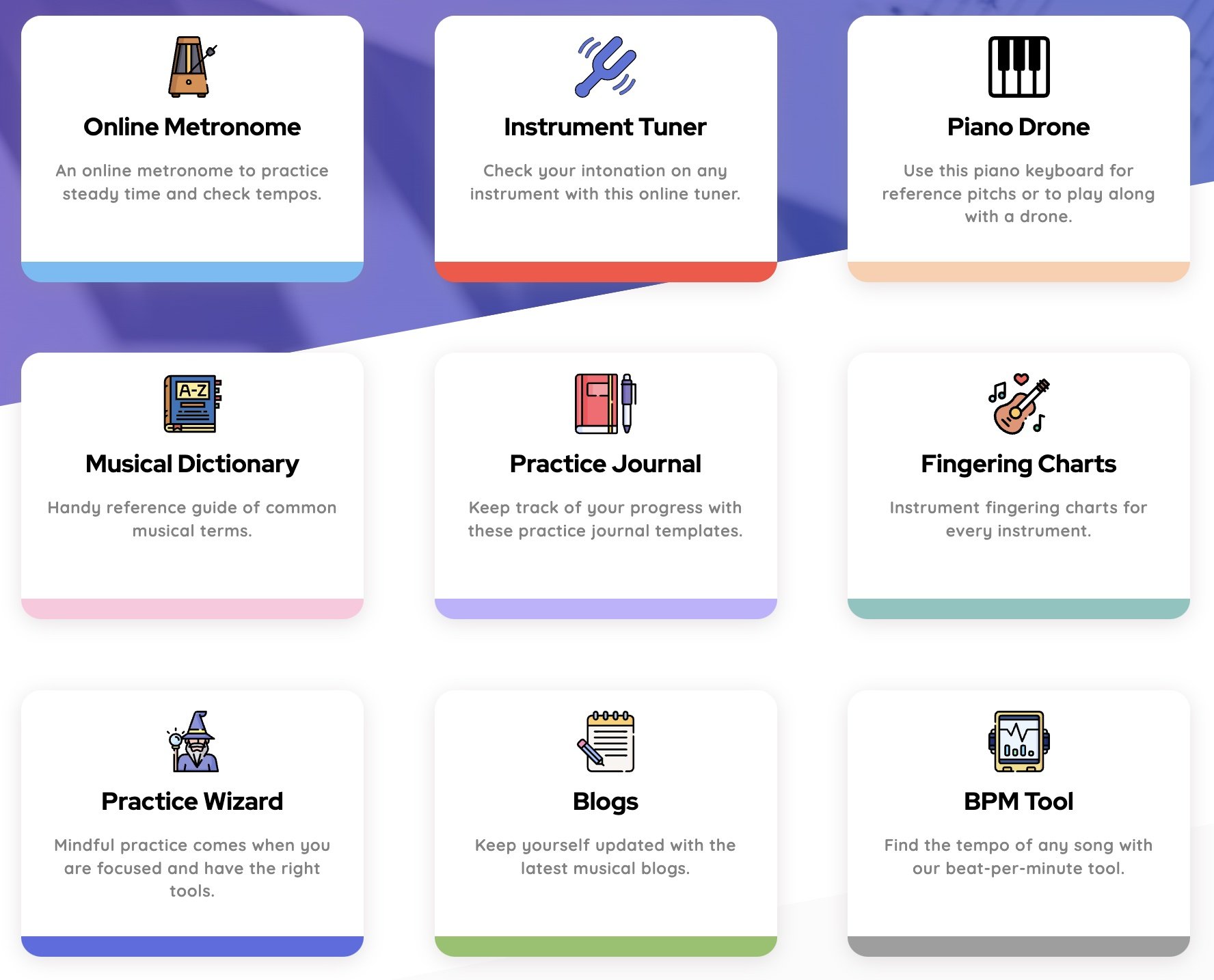Tool: The Online Metronome
Don’t let the name of this tool fool you. The Online Metronome site has an amazing collection of free tools for music educators, and it is definitely something that you should bookmark right now. Created by musician and educator Andrew Swinney, this site is a wonderful resource for music teachers and their students, specifically in terms of getting students to practice. This post includes a detailed description of each of the tools, and how they can be used.
Online Metronome: The online metronome works from 20 bpm to 300 bpm and allows students to practice with either eighth-note, triplet, or sixteenth-note subdivisions. Personally I love the sound of the metronome (I know that sounds silly but its true) and the subdivisions are really useful and the ability to use a tool like this on a phone or Chromebook is really convenient. There are also some great tips for practicing with a metronome more effectively and a quick guide to checking tempo ranges in beats per minute.
Instrument Tuner: This chromatic tuner works with any instrument and displays pitches in concert pitch. You can use it to tune your instrument or check the intonation for a specific pitch. The interface of the tuner is a needle which gives you a visual indication of pitch accuracy. Just like with the metronome, there is a LOT of information on how to use a tuner, how a tuner works, how to practice with it, and most importantly how to tune your instrument!
Piano Drones: This really cool tool will play drones for on pitch is selected to allow students to hear melodic or long tone passages with a drone in the background to help students play in tune. It’s not something that I ever did with my students when I taught band, but I am sure it would have helped them tremendously.
BPM Tool: I love this very simple tool. You simply tap along to a recorded piece of music (or just one playing in your head) and the BPM tool will let you know exactly what the tempo is. Sometimes the simplest things can make you smile. This tool is super useful for both teachers and students alike.
Fingering Charts: again, I LOVE this one - so useful. Every instrument fingering chart all in one place. If a student runs across a note that they might not know the fingering of while they are practicing, they can quickly and easily access this tool to see exactly how to play that note.
Practice Journal: This assortment of free downloadble PDF templates that document student practice in different ways are the perfect companion to track student practice over time, and a great way for students to be accountable on a weekly basis. Documenting practice sessions is really important and can/should be a component in grading. It helps you keep track of your problems and learning so you can discuss them with your teacher in your next lesson. There are also some great tips on the importance of practice as well as the what, why and how of successful practicing.
In addition to these wonderful tools, there is a comprehensive musical dictionary, a Practice Wizard section which is currently under construction, and a blog written by Andrew on many facets of music education. I highly encourage you to both use this site with your instrumental and vocal students AND help support his efforts by donating some money - either one-time or recurring. Keeping FREE resources like this up and running is FAR from cheap and Andrew is providing an amazing service. Andrew - if you happen to read this post, THANK YOU for all you do for music educators!!






